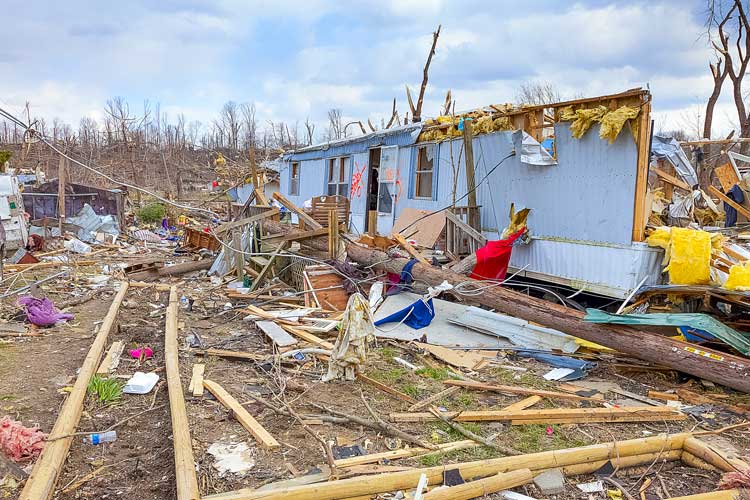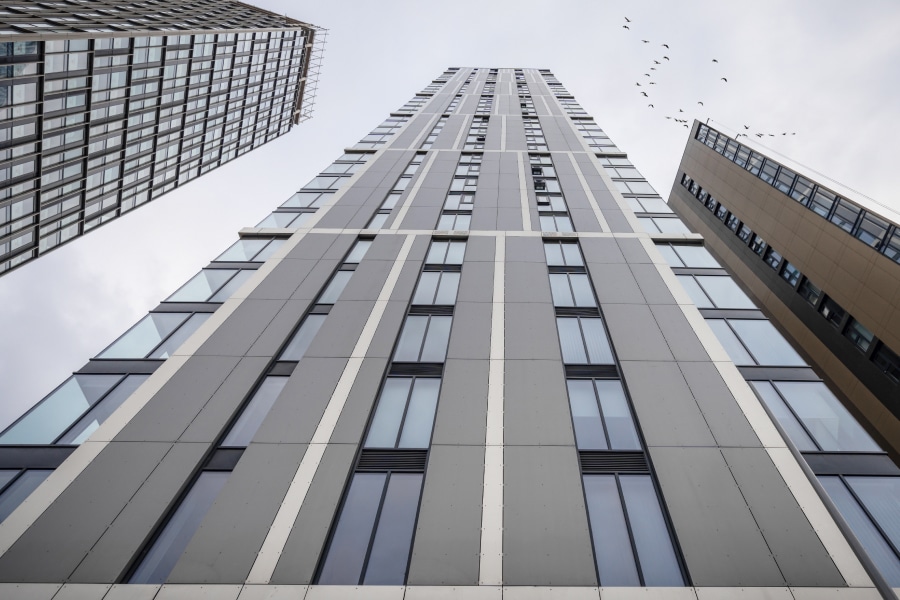Earlier this year a swarm of tornadoes touched down in Lee County, Alabama, razing hundreds of structures and killing 23 people. Many of those killed in the rural county were living in mobile homes, which are common in the country’s most tornado-prone states and particularly vulnerable to storm damage.
Indeed, a disproportionate number of tornado fatalities occur in mobile homes, according to the National Weather Service: Nearly half of all Americans killed by tornadoes are in mobile homes—despite the fact that the structures account for less than 10 percent of the United States’ housing stock.
It’s not just an American problem; tornadoes can occur almost anywhere in the world, with other hotspots in Canada, Bangladesh and Europe. Poor housing construction was a key factor in what may be Bangladesh’s deadliest tornado as well, a twister that struck in 1989 and left 1,300 people dead, some 12,000 injured, and another 80,000 homeless. But the U.S. sees more tornadoes a year than any other country, and the number of mobile homes in the country has sky rocketed over the last few decades, leaving an increasing number of Americans vulnerable to severe storms.
The design of mobile homes, which typically have metal or vinyl siding over a very light-weight stud framing, are inherently vulnerable to debris impacts and wind damage, experts say.
“Back in the 1970s, the mobile home industry enhanced their standards to make mobile homes stronger, but they’re still not strong enough for the wind speeds of common tornadoes,” says Laura Myers, the director of the Center for Advanced Public Safety at the University of Alabama, who noted that the most destructive tornado that hit Alabama earlier this month was an EF-4 (on the five-level enhanced Fujita scale of tornado strengths). “Even a stick-built structure cannot withstand an EF-4,” she adds.
Though the light-weight materials they’re made with leave mobile homes vulnerable to storm damage, it’s also what makes them affordable for millions of Americans, so beefing up the standards further isn’t really a viable option.
There’s a lot of variation in mobile home construction, but most are not on permanent foundations, according to Jason Pirtle, the president of the National Storm Shelter Association. “Typically there is space between the ground and foundation, and so wind can get up under the trailer,” he says. But the bigger issue is debris damage. Mobile homes are usually tied down with metal strapping, which is exposed and thus vulnerable to impacts from trees and other debris—unlike the buried, concrete foundations of most stick-built homes.
The safest mobile homes are not mobile at all, but anchored to a concrete foundation, and mobile-home dwellers can also reduce damage by anchoring down other outdoor structures such as sheds, swing sets and outdoor furniture, which could become projectiles if left untethered.
The best solution, experts say, would be for people living in mobile homes to get to a designated community shelter, church or some other fortified building that can hold many people and withstand strong storms. Since a deadly tornado outbreak in 2011 killed more than 300 people across the American South, Myers says they’ve seen a big uptick in the number of people willing to use community shelters during a storm. But, depending on how much warning residents get, that’s not always possible. In Dixie Alley, the stretch of the southern United States most vulnerable to tornadoes, mobile homes are often scattered and may be as much as 20 miles from the nearest shelter.
In 2016, the National Oceanic and Atmospheric Administration launched a project to improve warning system for mobile home residents in the American southeast, which looks at both tornado and human behavior for insights into how to give people more time to get out of harm’s way.
Building a shelter nearby is also an option. While Minnesota and Kansas have laws requiring shelters at mobile home parks be of a certain size or age, elsewhere, residential shelters are still voluntary—and expensive. Most mobile home parks are privately owned, and park owners usually push back against shelter requirements citing the high costs. Community-scale shelters tend to run $180-250 per square foot, according to Pirtle, with the price rising or falling with the size and amenities included.
Plenty of companies sell pre-fabricated, residential shelters, which top out at around 16 occupants. The residential shelter market is dominated by above- or below-ground structures made of concrete, steel or occasionally fiberglass. “For your bare bones shelter, they’re going to run from $2,000-$5,000,” Pirtle says, “and up past that as you start adding bells and whistles.” Every underground shelter needs a ventilation system, for example. Following deadly storms, officials often provide tax breaks or government assistance to help individuals pay for shelters, but they rarely cover the entire cost.
“After the storms in Lee County, there’s going to be a lot of opportunity for people to get federal assistance to build a shelter,” Myers says. “The problem is [residents] have to pay for it upfront, and then they’ll get reimbursed about 75 percent of the cost, so they’re going to do a cost benefit analysis and think, ‘is it worth the risk?’”
If a mobile-home owner does decide to purchase a shelter, the most important thing, Pirtle says, is choosing a producer that is a member of the National Storm Shelter Association, which evaluates shelter producers and designs to make sure they are up to code.
“As an association, we try to promote good shelter design and construction, so it’s important that the consumer knows when buying a shelter that they have some confidence in what they’re purchasing, because when it comes down to it a storm shelter is a life-saving device,” Pirtle says. “You don’t want to have questions about the design when a storm is coming.”











